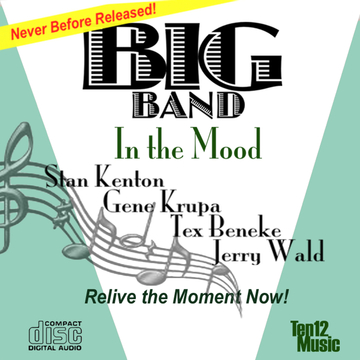As one music critic observed, “Jerry [a name which might well stand for Jericho, the way he blows that horn] is definitely one of the better clarinetists in the business. His range, his imagination, and his technical ability are superb.”
Wald had played the soprano sax at age 7, and later studied the alto saxophone and clarinet with private teachers.
After he formed a big band, they worked regularly in New York City, at Childs’ Spanish Garden in 1941 and the Lincoln Hotel in 1942, and in Chicago, at the Panther Room of the Hotel Sherman in 1943 and at the Hotel’s College Inn during 1944.
“In almost every number the Wald clarinet is a dominant factor,” Will Davidson wrote in the Chicago Daily Tribune. “Not to the obliteration of the ensemble; rather to its advantage.”
Wald and his orchestra made their first records in 1942, for Decca. They also recorded during the 1940s for, at different times, Majestic, Sonora, and Columbia.
They appeared in one movie, “Little Miss Broadway” (a 1947 Columbia Pictures film, not the 1938 Shirley Temple 20th Century-Fox feature).
given name Jervis Wald
birth Jan. 15, 1918, Newark, NJ
death Sept. 1973, Las Vegas, NV
residence 1 Marshall St., Irvington, NJ (1950s)
Historian-author George T. Simon once commented, “Jerry Wald sounded like Artie Shaw, a comparison that Jerry often resented and about which Artie couldn’t have cared less.”
Admittedly, Shaw had been one of Wald’s idols, and in 1942-43 he even hired some of Shaw’s former sidemen, including trumpeter Bernie Privin, alto saxophonist Les Robinson, bassist Sid Weiss, vocalist Anita Boyer; and arrangers Jerry Gray, Ray Conniff, and Bill Challis.
Among the other members of Wald’s bands, at various times, were Johnny Bond, trumpet; Nelson Riddle and Ray Sims, trombones; Bobby Dukoff, Al Cohn, and Bill Perkins, tenor saxophones; Al Haig, piano; Billy Bauer or Artie Ryerson, guitar; Jerry Gilgore or Irv Cottler, drums; Lillian Lane or Ginnie Powell, vocals; and Manny Albam, arranger.
Wald announced plans in late 1946 to drop the large brass section and feature his clarinet with a 15-piece band including one trumpet, a French horn, nine strings, and four rhythm.
In Hollywood from 1949 to 1951, he ran the Studio Club (located across the street from the Palladium) and led a big band there.
He returned to New York City and recorded again for Decca in 1952, making six sides – most featuring vocals by Chris Connor.
In 1953, Wald did a 10-inch “Tops in Pops” LP for an MGM subsidiary, Lion (no.E70014), as part of their new “Designed for Dancing” series. The selections included The Moon Is
Blue, Changing Partners, I Love Paris, and Rags to Riches, and Bill Evans was present on piano.
Evans was back on 1955’s “Listen to the Music of Jerry Wald and His Orchestra” (Kapp KL-1043), which included, among others, several songs by the Gershwins (Who Cares?, I’ve Got a Crush On You, and Maybe) and Rodgers and Hart (Dancing On the Ceiling and Little Girl Blue). Probably because of Evans’ later acclaim as a jazz pianist and composer, the album was reissued by MCA in Japan around 1980.
Wald also did a couple of 45 rpm singles for Kapp, Valley of the Redwoods / Dancing Castanets (K 173X) and Frenchman’s Creek / Mesa Verde (K 212X).
He finished off his recording career with some 45s for smaller companies, Todd (Moon Over Miami / Sheba) and his own Waldork label (The Creeper / Nightmare) in 1958.
Simon acknowledged that Wald’s band always sounded good, “But distinctive, seldom.”
[less]